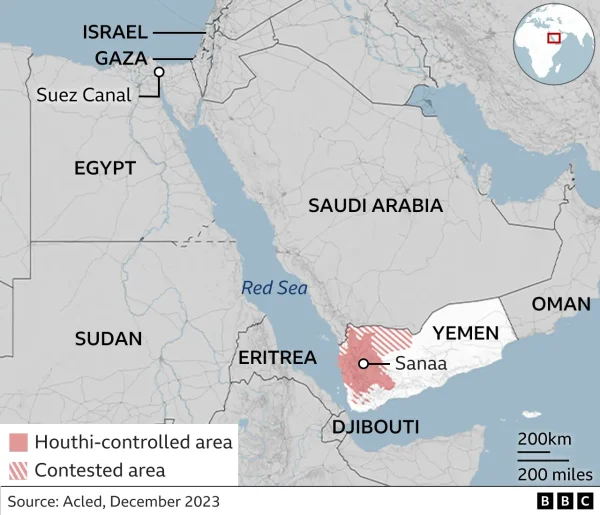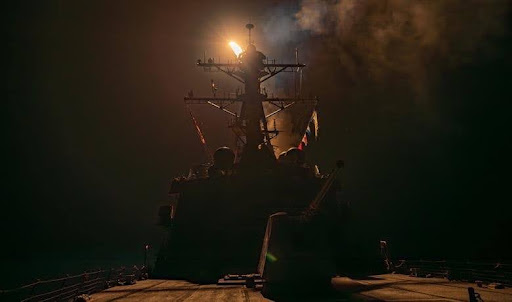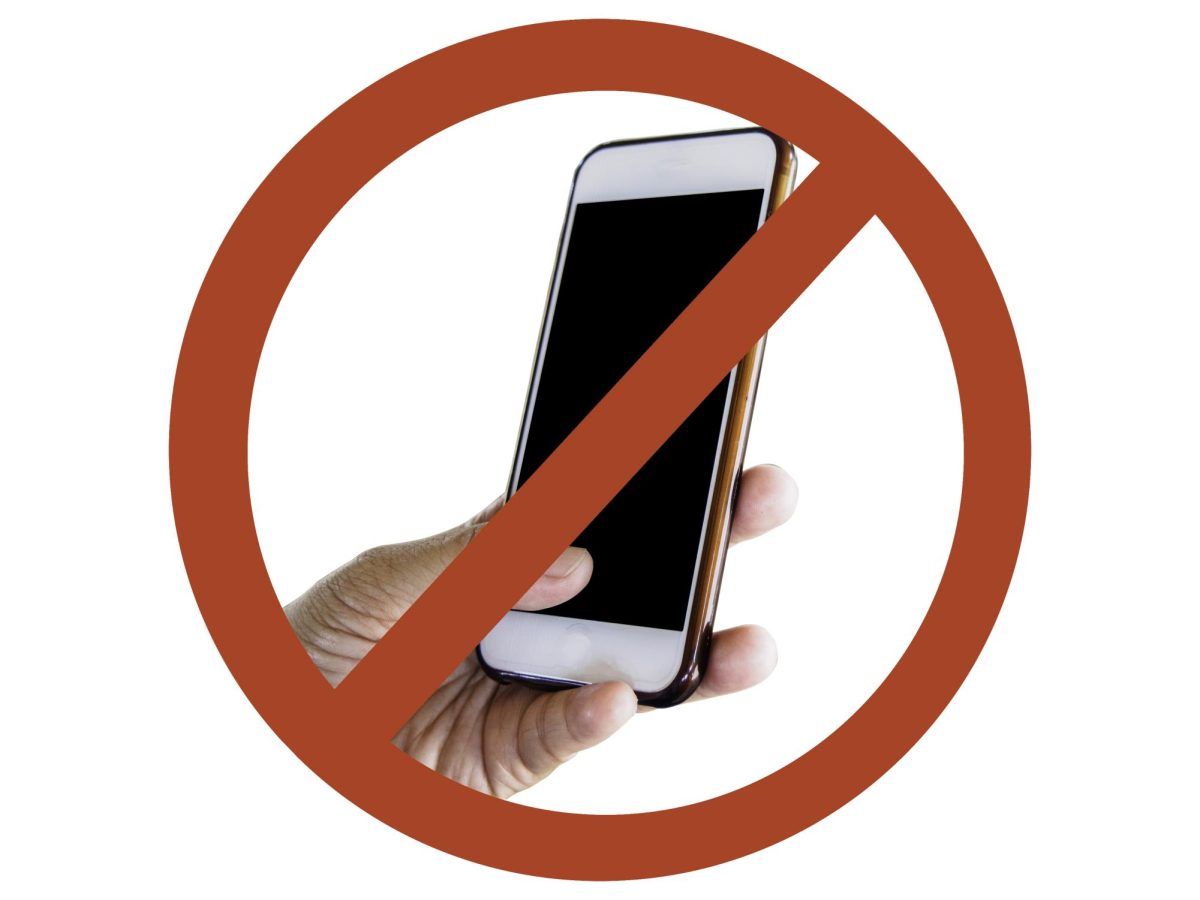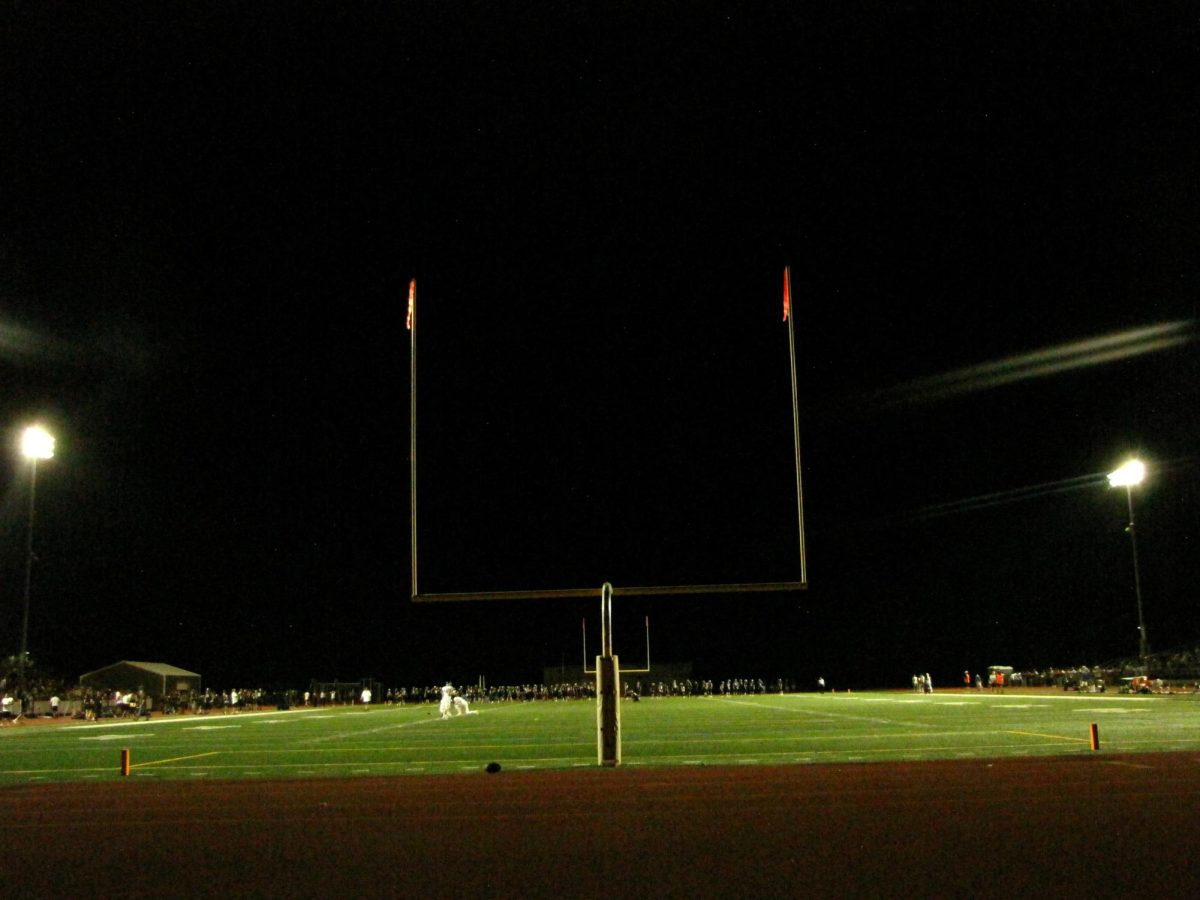Starting in mid-November, the Houthis, a militant group in Yemen, has grabbed international attention as it began attacking ships passing through the Red Sea. On October 7th, the Houthis announced that they would begin attacking ships traveling to or from Israel to express their support for Gazans during the Israel-Hamas war. Since November, they have indeed attacked ships sailing through the area, but many of those ships have not had any clear connection to Israel, according to the New York Times.
The result of these attacks has been a major disruption of trade routes affecting people and countries around the globe, claims that same article. The Suez Canal, which leads directly into the Red Sea, usually enables ships to reach their destination quickly, because they do not have to sail all the way around Africa. Now that many shipping companies are unwilling to route ships through the Suez Canal and the Red Sea for fear of attacks by the Houthis, shipping can take up to ten days longer than it normally would.

Map showing Yemen, the Red Sea, and the Suez Canal (Graphic courtesy of BBC)
In order to combat this threat to global supply chains, the U.S. has put together a task force to protect ships traveling through the Red Sea and cripple the Houthis ability to launch attacks. The task force includes England, Australia, and Canada, among others. Notably, the only Middle Eastern country to join the force was Bahrain. Other countries in the region may not have wanted to associate with the U.S. because of its support of Israel in the Israel-Hamas war, according to the New York Times.
The U.S. has carried out strikes in Yemen with the help of England in order to destroy the Houthis’ munitions and its ability to threaten ships. The first of these strikes happened on January 11, 2024. Other strikes of comparative scope have been carried out on January 22 and February 3rd.
Despite all this, the Houthis remain undeterred and claim that they will only stop when the conflict in Gaza comes to an end. According to the New York Times, “the Houthis retained around 75 percent of their ability to fire missiles and drones at ships transiting the Red Sea…”. The group’s tactics make them tricky foes to fight. They do not have any major military bases or storehouses and their arsenal is almost completely mobile. This makes it difficult to find any worthwhile targets to strike. In order to combat this strategy, the U.S. uses drones and other methods of surveillance to spot Houthi missiles and destroy them right before they can be launched.
In order to fully understand this conflict, it is important to examine the background of the Houthis. In 2014, the Houthis tried to overthrow Yemen’s government and seize the capital. In response, Saudi Arabia intervened and attempted to reinstate the official government, sparking a civil war that continues today.
While the Houthis are the de facto ruling party, they do not have control over the entire country. Although other groups vie for power and control, the Houthis happen to be the largest and most powerful, according to the New York Times. This is partially due to support from Iran, which supplies them with missiles and other weapons, claims that same article. Iran also backs other militant groups throughout the Middle East, including Hamas in Gaza and Hezbollah in Lebanon.
These groups make up Iran’s “axis of resistance”. Their shared goal is to weaken American influence in the region and destroy Israel. Each group also has other goals depending on where they are located. The Houthis, for example, are also trying to cement their control over Yemen. For the most part, Iran doesn’t directly control such groups. It supports them and supplies aid, but they are mostly autonomous, reports the New York Times.













![Zordan, E. (2025). Gillian Murphy. [Photograph] The New York Times.](https://chswarriorscroll.com/wp-content/uploads/2025/10/unnamed-1200x1200.png)









